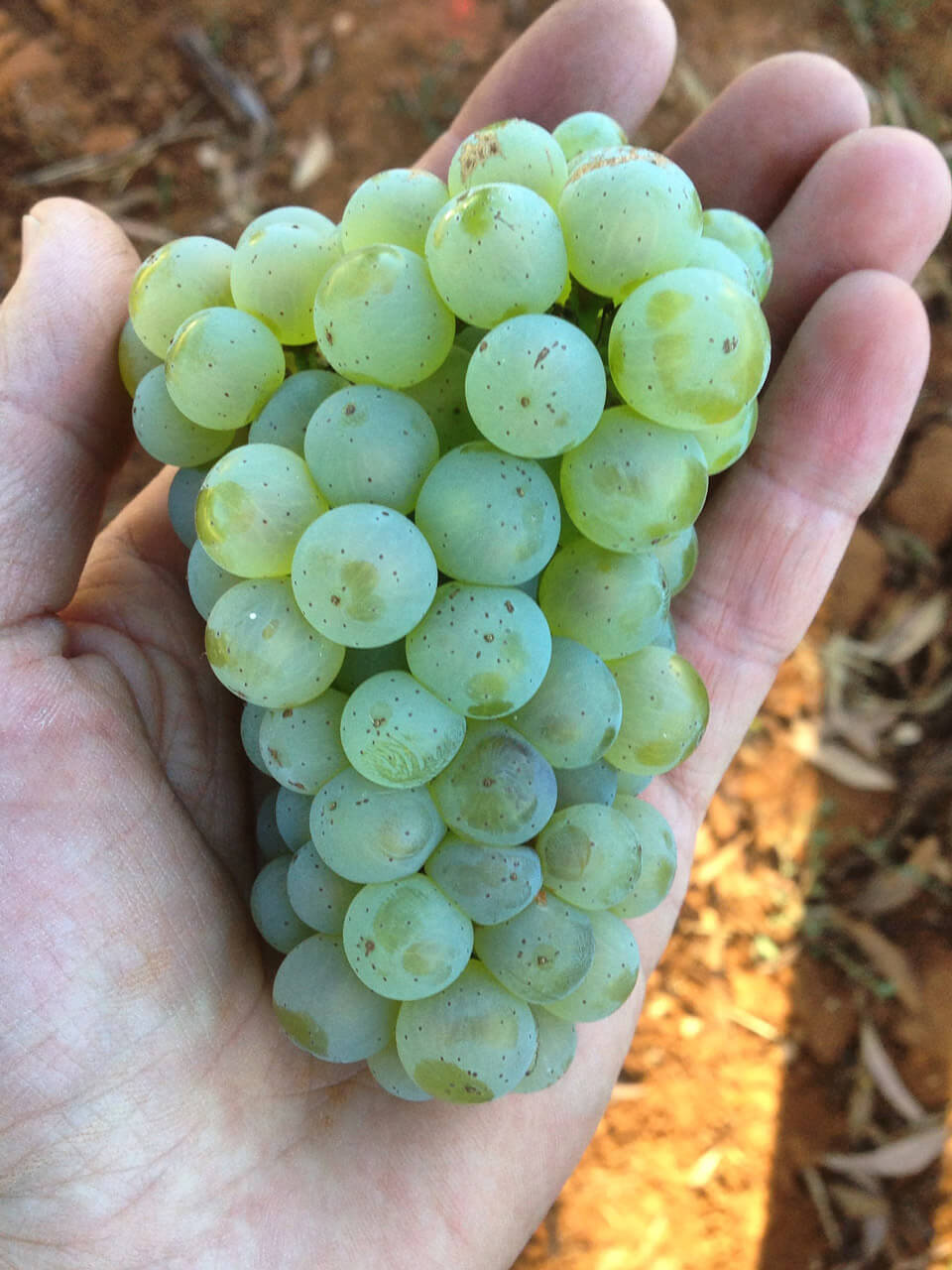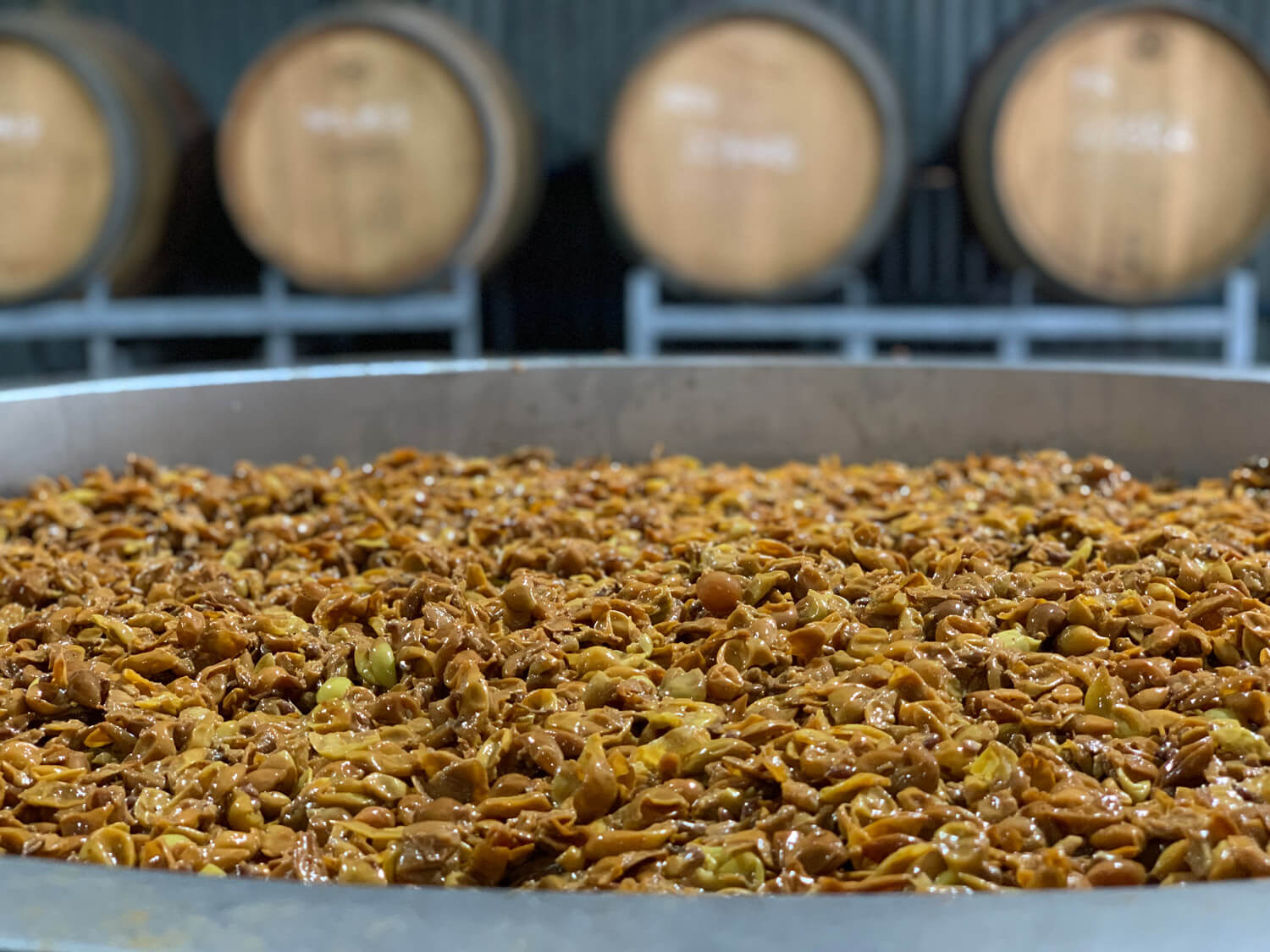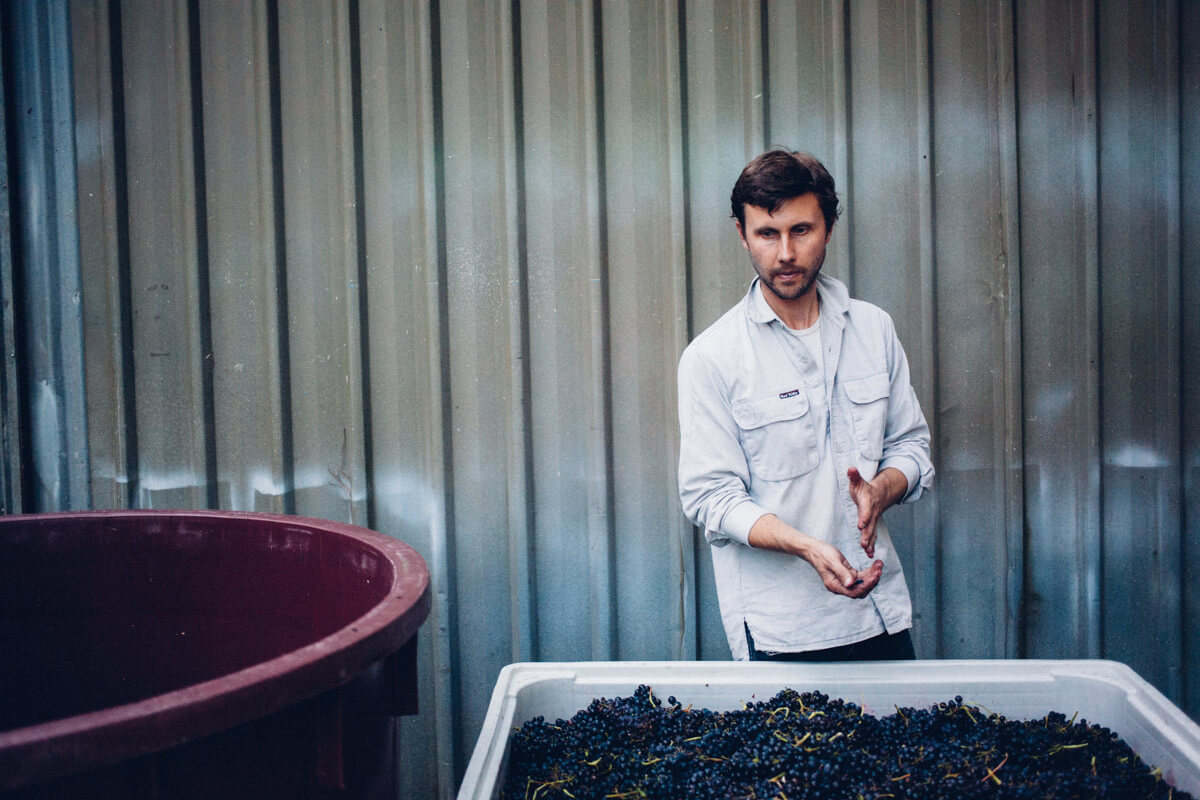David Caporaletti started Architects of Wine when an obsessive winemaking hobby spiraled out of control, necessitating a commercial release. Since then, Caporaletti has not looked back, with a deep investigation primarily of Italian varieties from vineyards in the Adelaide Hills, though he also sources grapes from the Clare Valley. The wines are firmly in the minimal-intervention camp, with minute additions of sulphur at bottling only, and are bottled without fining or filtration.
As the name of his label betrays, David Caporaletti started his career as an architect, working in the field for nearly a decade before moving into construction and project management, which remains his ‘day job’. “I have Italian heritage on my father’s side and my grandparents had always grown their own grapes and made their own wine in their backyard, so I was exposed to winemaking from a young age. I was always interested in wine, drinking wine, cellaring wine, until one day, I just decided to have a go and make some wine of my own.”
Caporaletti found the process addictive, and kept making larger and larger batches, until in 2013 he well surpassed his needs, as well as of those around him. “I just made a heap of wine and it all turned out pretty good!” he says. “It was way too much wine for us, friends, and family, so I just jumped in and created Architects of Wine. I always thought that we had a nice little niche and with enough hard work and dedication could make it work.”
Architects of Wine has a prime focus on Italian varieties, with a strong lean towards nebbiolo, with four versions made from different sites in the Adelaide Hills: Gumeracha, Kersbrook, Uraidla and Macclesfield. Caporaletti also works with nero d’avola, dolcetto, brachetto and moscato giallo, while also making shiraz, chardonnay and a skin-contact riesling. The range also includes a pét-nat and a piquette.
“I have always had a focus on minimal intervention winemaking since day one, likely resulting from watching the way my grandparents made wine in the same way many years prior. I’m really keen to show that minimal-intervention or ‘natural’ winemaking, whatever you want to call it, can truly make fine wine styles as well as the fun stuff. The wines are more dynamic, more interesting, and are better representations of vintages and sites. It’s what makes wine so interesting.”
Caporaletti sees this style of making as being intrinsically dependent on fruit from the right sources. “Fruit is preferred organic or biodynamic, although this is very difficult to find with some of our varieties. What’s more important is that the vineyards are farmed sustainably and ethically. Minimal intervention and low or no sulphur winemaking can be very challenging. There are very few tools at your disposal to correct any potential issues. Disease-free, high-quality fruit is paramount. Having the correct varieties planted to the correct sites is ever so important in this scenario,” he says, reflecting on the diverse qualities of the Adelaide Hills.
“Given that most of our production is using Italian varieties, a large portion of which are northern Italian varieties, our greatest source for these top-quality cool climate grapes is the Hills. I’m especially keen on nebbiolo and I think the Adelaide Hills is one of Australia’s great upcoming regions for growing great neb.”
All the AOW wines are fermented with ambient yeasts, and there is nothing added – bar a very small dose of sulphur at bottling, and sometimes none at all – or taken away, with no fining or filtration carried out. “I aim to create interesting and textural wines with restraint, while maintaining transparent expressions of the vineyard, vintage and their individual terroir,” says Caporaletti. “To achieve this, each wine is carefully crafted and considered with a ‘less is more’ mantra and a hands-off style of winemaking.
“I generally don’t constrain my winemaking to any specific rules. Quite the contrary, I like breaking the rules and seeing what we can come up with. One of our first wines was a skin-contact riesling bottled in a Burgundy bottle, which turned a few heads when it was released. The one golden rule I’ve learnt though is to trust my instincts. I simply want to make great expressions of Italian varieties grown in Australia, showcasing that minimal intervention/natural is not an excuse for poorly made wines.”







